Affiliate links on Android Authority may earn us a commission. Learn more.
Should you get a robot vacuum, or a smart stand-up vac?
Published onMarch 4, 2023
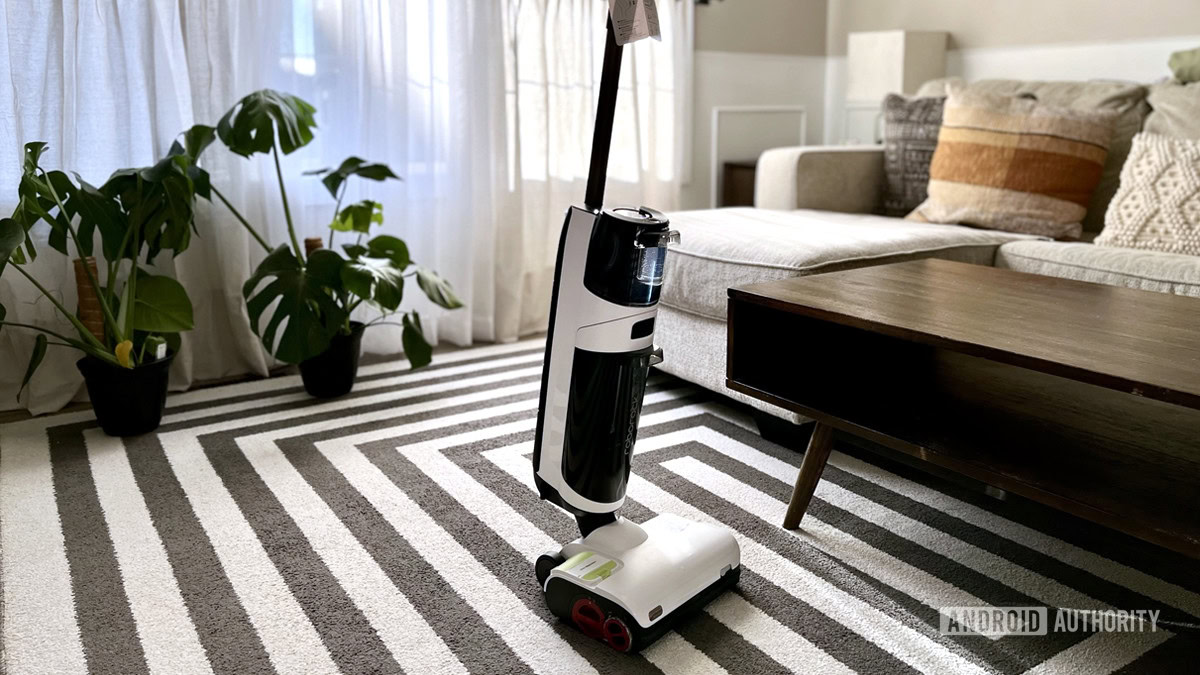
I recently had the chance to review the Roborock Dyad Pro, my first smart vacuum that isn’t a robot. That concept might be unfamiliar to some people, so prompted by others at Android Authority, I’m sharing my experiences with both cleaning options — weighing their pros and cons for people who’ve tried one or neither.
Let’s clear things up immediately: a robot vacuum is capable of fully autonomous cleaning, or at least operating without being directly guided by your hands. Control is handled through a mobile app, or if you’ve got one, a smart speaker or display. Some robots come with docks that automatically empty debris into a bin, or even change out dirty water if the robot has mopping functions.
Smart stand-up vacs are largely similar to traditional ones, both in design and in requiring hands-on control. The difference is that they offer app-based status and settings options, and/or the ability to switch between cleaning modes automatically. The Dyad Pro claims both, its flagship feature being the ability to switch between suction and mopping based on surface detection. It also ships with a dock that enables self-cleaning and drying when you’re done.
Do you own a robot vacuum or a smart stand-up vacuum?
What’s it like to use a robot vacuum?
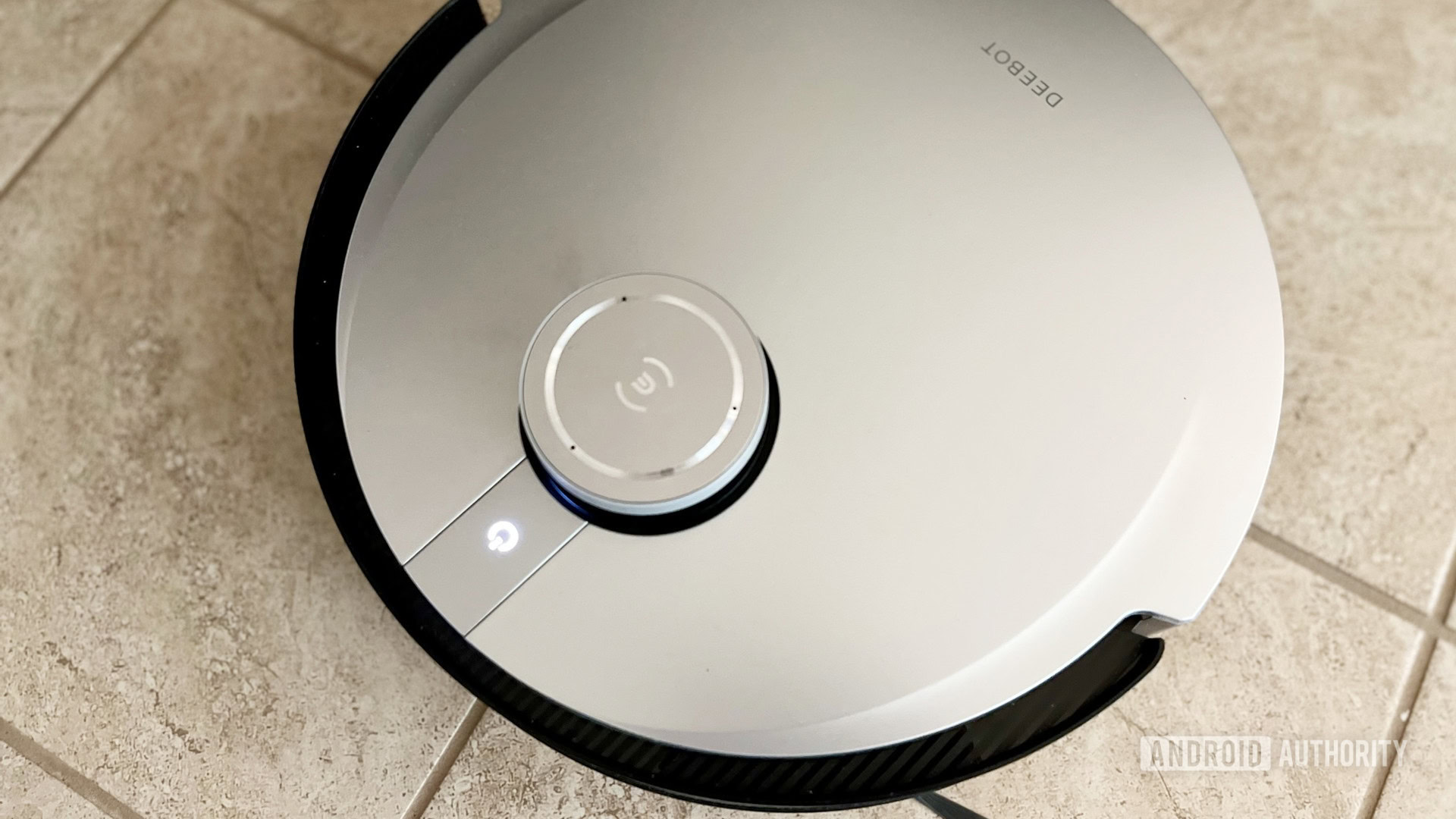
The chief advantage of a robot is the ability to set it and forget it. If you’ve programmed the right schedule and dealt with potential obstacles, you can almost forget your robot exists. When I was testing the ECOVACS Deebot Omni X1, for example, I scheduled it to work the main floor only while my family was upstairs sleeping, out of earshot. Sometime after my review, it got to feeling like the floor was just naturally clean, and the X1 was a piece of static room scenery. That vac is sadly out of my home now.
If you set the right schedule, you can almost forget your robot exists.
When you do need to intervene with a robot vacuum, the effort is often minimal, usually just a few taps on your phone or a voice command. That’s especially true if a robot has a high-end dock, like the ones for the X1 and another Roborock product we reviewed, the S7 MaxV Ultra (below). These help stretch the time between bin/tank changes from days to weeks, or even months if you don’t run your machine that often. To my knowledge, you can’t find that sort of dock for a stand-up vac — I’m now emptying the Dyad Pro once every week or so, and replenishing its clean water every two to four sessions. Thankfully, its detergent cartridge seems to last a lot longer.
Another opinion: After six months with a robot vacuum, I’m never going back
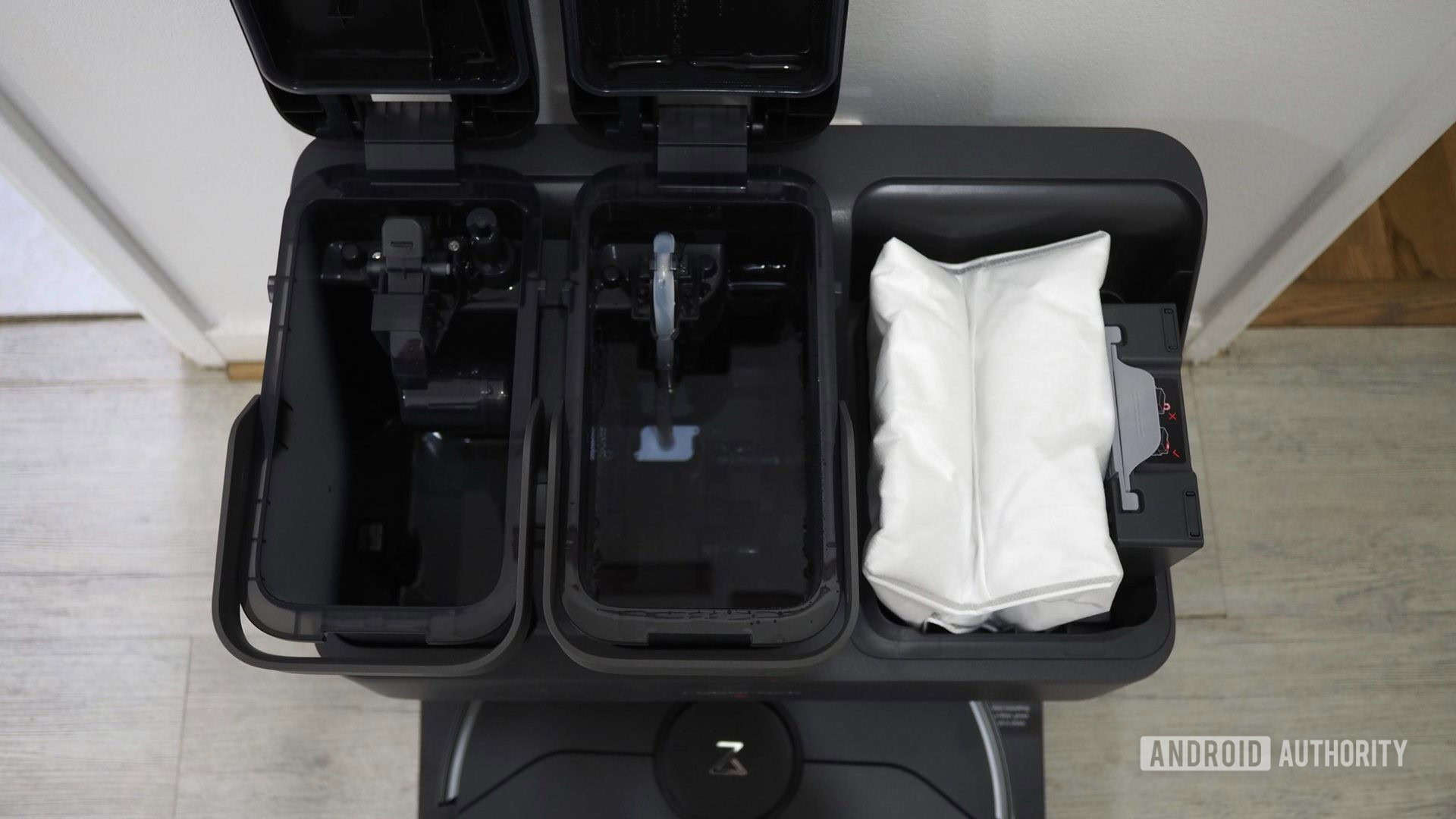
A robot’s ideal place is in a home with an open layout, and relatively few things cluttering the floor. That maximizes its efficiency and makes it less likely to get stuck or clogged. My current house is the opposite of ideal in that sense, since it has small floors, narrow hallways, and clusters of toys and renovation supplies. In fact while I still have a Neato D7 robot I reviewed years ago, I’m only using the Dyad Pro at the moment, since the D7 and its charging dock would take up more space than they’re worth.
The (literal) pitfalls of robots
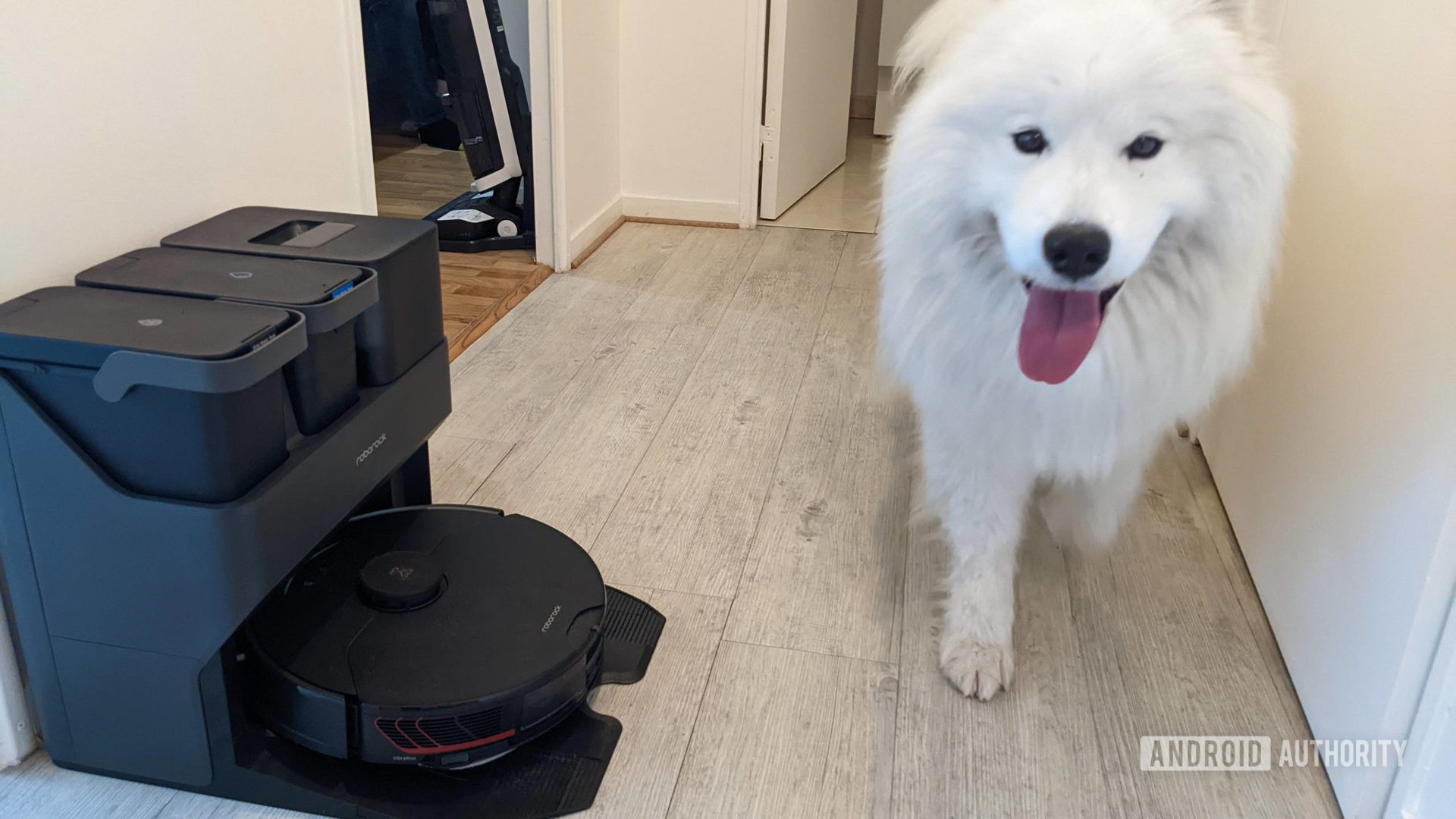
The main disadvantage of robots, in my experience, is the potential for getting trapped on furniture and objects. Their obstacle avoidance is only as good as their sensors and algorithms, and since sentient AI hasn’t been invented yet, they’re not always smart enough to dodge a pet, a USB cable, or the edge of the stairs. While I haven’t dealt with this personally, I occasionally hear anecdotes of robots tumbling down steps.
None of this is a big deal if you’re ready to come to the rescue, but if you’re away or sleeping, it spells trouble. At best you might discover your vac has a drained battery and didn’t finish its run; at worst, it might destroy valuables.
Obstacle avoidance is only as good as a robot's sensors and algorithms, which can cause chaos.
Reliance on “weak” AI (a technical term, not an insult) also means a robot can miss spots a human would catch, particularly corners or under furniture. The D-shape of Neato products helps fix the corner issue, but with any robot you’ll inevitably want a second, manual device to finish off your floor, never mind things a robot can’t reach, like curtains or desks.
Incidentally, something that never gets mentioned in reviews is that robots can be problematic if you have preschoolers around. At our old house in Austin, my son used to like to play with the buttons on our robots, or even drag them out of their docks. He knows better now, but only because he’s been scolded repeatedly.
What’s it like to use a smart stand-up vacuum?
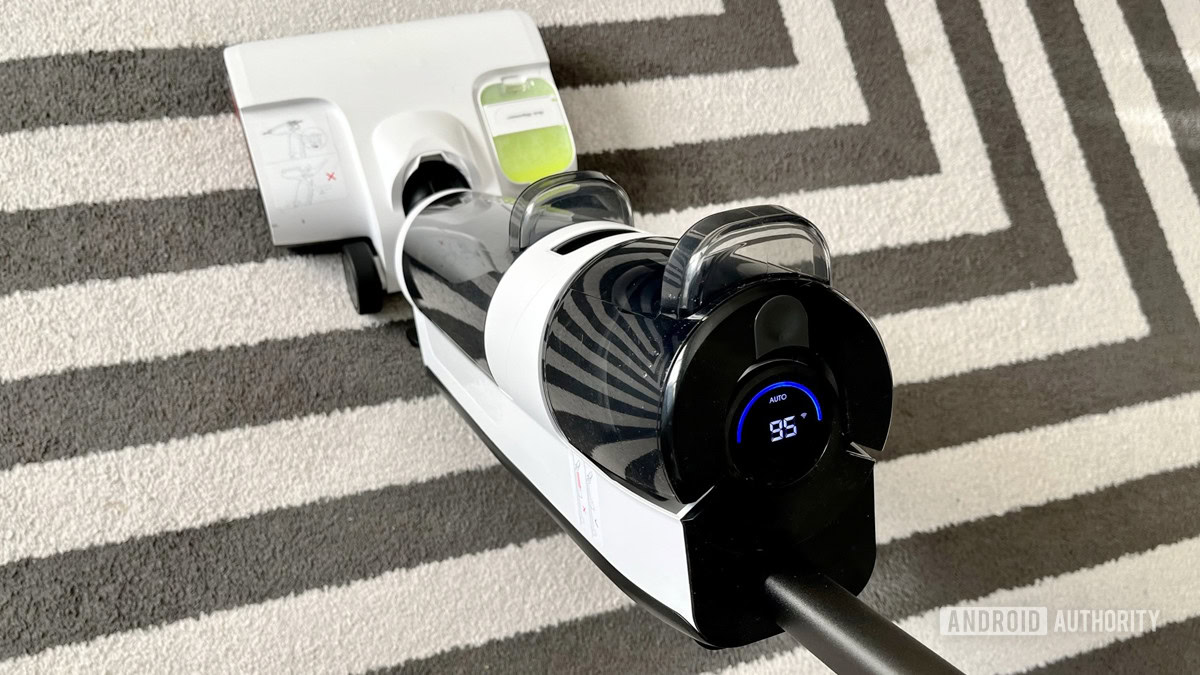
For the most part, these smart versions are as manual as any other stand-up vac, meaning you’re pushing around a handle, and emptying any bins or tanks yourself. The Dyad Pro’s self-cleaning dock saves some effort, but you’re still going to spend 20 to 40 minutes or so actually cleaning your floor.
That might sound unappealing, but as mentioned in the intro, some smart vacs like the Dyad Pro or Tineco Floor One S5 use sensors to switch between mopping and vacuuming on the fly. The combination of this and manual steering can actually make stand-ups more efficient than robots in some cases, since you can cut to the chase in finishing spots a robot would miss, or save the trouble of changing attachments when a robot supports both vacuuming and mopping but can’t switch modes on its own (as with the X1). A robot isn’t really saving you grief if you’re spending a lot of time solving its shortcomings. That’s particularly true in my current house, which is an obstacle course for AI but a cinch for a human.
Stand-ups are also superior at spot cleaning, given that you don’t have to fiddle with app-based targeting or trigger an unnecessary full-floor run. Moreover, most robot vacs don’t have enough power to handle large or stubborn messes such as pasta or custard. Though the Dyad Pro isn’t the strongest vac out there, it has more suction than the X1, and a human knows when to hold still to make sure a mess is gone.
Stand-ups are superior for spot cleaning or large messes.
For some people, the greatest selling point may be the option of combined vacuum and mopping functions for a lot less than it costs in a robot. The X1 hits $1,550 before discounts, and even iRobot’s Roomba Combo j7 Plus lists for $1,100. Suddenly, the $450 for a Dyad Pro or Floor One S5 seems trivial.
Robot vacuum or smart stand-up vacuum: What’s the best option for most people?
I’d suggest buying a robot dry vac with a self-emptying dock — such as iRobot’s Roomba i3 Plus ($400-500) or Ecovacs’ Deebot Ozmo N8 Plus — and combining that with a “dumb” mop, a cheap stick vac, and a small handheld vac for things like desks and keyboards. It’s usually dry floor debris that people are most concerned about, and this combo automates that part while saving the rest of your money for tools you’ll want anyway.
There are plenty of exceptions, however. If you’ve got a small home, a lot to mop, and/or need to do a lot of spot cleaning, a smart stand-up vac/mop might be your best primary tool, assuming you have time for the labor. People rolling in cash can obviously buy a top-of-the-line vac/mop robot with a dock like the Roborock S7 MaxV Ultra, but like I said, they’ll still need secondary devices to complete the job.
Most people should get a robot dry vac, pairing that with a collection of cheaper devices to cover the bases.
I can’t tell you how to spend your cash. But from my own perspective, it seems a bit much to fork out $1,000 or more when you’re normally just dealing with crumbs, hair, and spilt milk and juice.

Accurate mapping and obstacle avoidance
Excellent cleaning and mopping

Good vacuuming, mopping performance
Well-designed mobile app

Smart app control
Light and maneuverable
Frequently asked questions
There’s no firm figure, but the consensus appears to be 4 to 6 years. That assumes you’re performing necessary maintenance, such as cleaning sensors and replacing filters and brushes. The major factory is battery life — even a rechargeable lithium-ion battery can only sustain around 1,500 to 2,000 charging cycles.
You may be able to push figures longer if you buy a high-quality model and dodge any serious strain on your machine.
Yes, and the technology is getting increasingly sophisticated. Better robots use cameras and LIDAR to map obstacles, saving that data to optimize later runs. Maps will also typically appear in a vacuum’s app, allowing you to target specific areas and/or furniture.
Yes. The tech industry moves fast, and while vacuum makers seem to have been good about long-term support so far, there’s always the chance they’ll drop a product line right when you need more supplies or replacement components.
At the least we’d recommend buying extra disposables such as bags and filters. Replacement components are less essential, but if you want to put off buying a new vacuum as long as possible, you should consider spare brushes, rollers, charging cables, and/or mop cloths, depending on your model. Keep everything in a labeled box so you actually make use of it.

